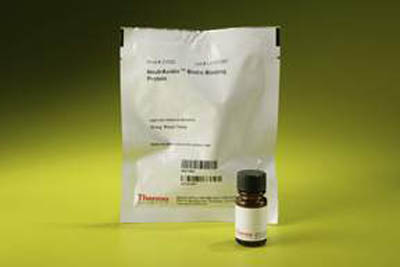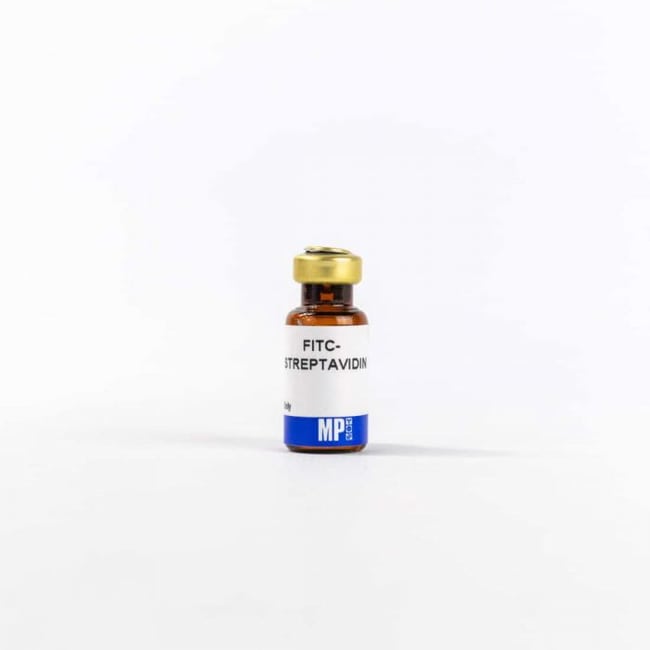
Streptavidin-Biotin Binding Products
The interaction between streptavidin and biotin allows the identification and purification of proteins and nucleic acids in many assays including immunohistochemistry (IHC), and Western blotting. Biotinylation involves tagging a molecule with biotin, which allows its subsequent detection through streptavidin binding.
Useful Links
Save Now - Exclusive Deals
Product Code 10700995
Product Code 18794494
Product Code 11825855
Product Code 11826814
Product Code 11886814
Product Code 18081104
Product Code 11449025
Product Code 11791456
Product Code 10465535
Product Code 11855855
Product Code 11459025
Must Have
Product Code 10655783
Product Code 10297422
Product Code 4532004
Product Code 7076265
Product Code 7075797
Product Code 7076266
Product Code 7180362
Product Code 7180383
Complete Your Order - Great Deals
FAQ
Streptavidin binds to biotin with an extremely high affinity and specificity. Here are the key aspects of this interaction:
- Binding Strength: The interaction between streptavidin and biotin is one of the strongest non-covalent interactions known, with a dissociation constant (Kd) in the femtomolar range (~10⁻¹⁴ M). This means that once streptavidin binds to biotin, it is very difficult to separate them
- Binding Sites: Streptavidin is a tetramer, meaning it has four binding sites for biotin. Each subunit can independently bind one biotin molecule
- Binding Mechanism: The binding pocket of streptavidin is highly complementary to biotin in terms of shape and chemical properties. The binding involves multiple types of interactions, including hydrogen bonds, van der Waals forces, and hydrophobic interactions
- Hydrogen Bonds: Several hydrogen bonds form between the biotin molecule and specific amino acid residues within the binding pocket of streptavidin, stabilizing the complex
- Hydrophobic Interactions: The biotin molecule fits snugly into a hydrophobic pocket within streptavidin, which helps to exclude water molecules and further stabilize the interaction
- Conformational Changes: Binding of biotin to streptavidin induces conformational changes in the protein that enhance the binding affinity and make the complex even more stable
This strong and specific binding interaction is widely utilized in various biotechnological and molecular biology applications, such as affinity purification, immunoassays, and labeling techniques.
The biotin-streptavidin system is highly popular due to its strong binding affinity and specificity, but there are several challenges that can arise in its use:
- Steric Hindrance: The binding of biotin to streptavidin can be hindered by steric factors, especially if the biotin is conjugated to a large molecule or if there are multiple biotin molecules in close proximity. This can prevent efficient binding
- Non-specific Binding: Although streptavidin-biotin interactions are highly specific, non-specific binding can still occur. This can be due to the streptavidin binding to other biotin-like molecules or due to the conjugates interacting with other components in the system
- Accessibility of Biotin: If biotin is not readily accessible (e.g., buried within a protein or attached to a surface in a way that blocks the binding site), streptavidin may not be able to bind effectively. Ensuring that biotin is exposed and accessible is crucial
- pH and Temperature Sensitivity: The binding interaction can be influenced by pH and temperature. Extreme pH levels or temperatures can disrupt the binding, reducing the efficiency of the system. Optimal conditions need to be maintained for consistent results
- Irreversibility of Binding: The biotin-streptavidin interaction is extremely strong, making it almost irreversible under normal conditions. This can be a challenge when you need to dissociate the complex, for example, in purification processes where you want to elute the biotinylated molecule
- Batch Variability: Variability between different batches of streptavidin or biotinylated products can lead to inconsistent results. This can be due to differences in the degree of biotinylation, the purity of the reagents, or slight variations in the preparation process
- Conjugate Stability: Streptavidin conjugates (e.g., streptavidin-HRP, streptavidin-fluorophore) may have stability issues. The conjugated molecule (HRP, fluorophore) can degrade over time, affecting the performance of the assay
- Background Signal: High background signals can occur due to non-specific interactions or incomplete blocking in assays like ELISA or Western blotting. Proper blocking agents and protocols need to be used to minimize background noise
When selecting streptavidin-biotin binding products, here are five important factors to consider:
- Binding Affinity and Specificity: Ensure the streptavidin and biotin products you choose exhibit high binding affinity and specificity. Streptavidin's interaction with biotin is exceptionally strong, with a dissociation constant (Kd) in the femtomolar range (~10⁻¹⁴ M). Verify that the products maintain this high binding strength and specificity to avoid non-specific interactions.
- Conjugation and Labeling: Determine the type of conjugation or labeling required for your application. Streptavidin can be conjugated to various labels, including enzymes (like HRP or alkaline phosphatase), fluorophores (like FITC or Alexa Fluor dyes), and other molecules. Choose the appropriate conjugate that aligns with your detection method (e.g., colorimetric, fluorescent, or chemiluminescent).
- Application Suitability: Consider the specific application for which you are using the streptavidin-biotin system. Different applications such as ELISA, Western blotting, immunohistochemistry, or affinity purification may require different forms of streptavidin (e.g., solid-phase immobilized, solution-phase, or nanoparticle-conjugated).
- Stability and Storage: Check the stability and storage conditions of the streptavidin and biotin products. Some conjugates may be sensitive to light, temperature, or pH changes. Ensure that the products you select can be stored under conditions that maintain their activity and stability over time.
- Compatibility With Other Reagents: Ensure that the streptavidin-biotin products are compatible with other reagents and buffers used in your assay. Some buffers or additives (e.g., detergents, reducing agents) may interfere with the binding interaction or the activity of the conjugated labels. Verify that the products work well within the conditions of your experimental protocol.
By carefully considering these factors, you can select the most appropriate streptavidin-biotin binding products for your specific research needs, ensuring reliable and reproducible results.









































